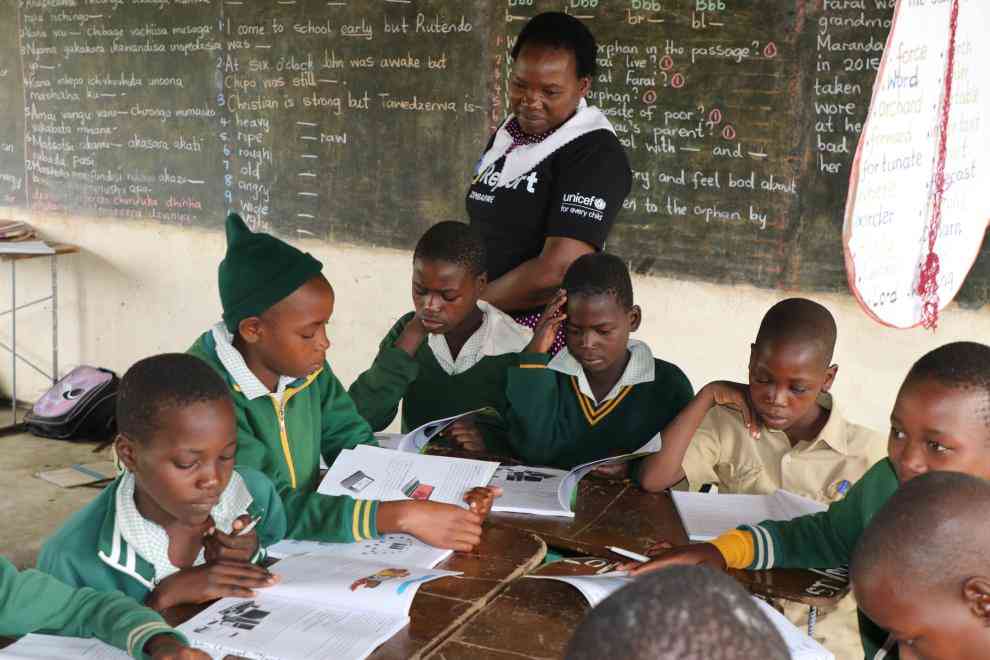
ZIMBABWE has had 42 years of successes and challenges. It is important to examine both aspects as we enter into the next few decades.
Successes include primary education for all and secondary education for half the age group. It is generally accepted that both were very good in the 1980s-1990s, but that the quality has deteriorated. The cost of education and training has increased exponentially, making it difficult for many to continue and to do well.
But on the other hand, there is consensus that Zimbabwe has failed in a number of areas, the most important of which is necessarily economic development and growth and job creation.
Zimstats has estimated that more than four million Zimbabweans have left the country as the diaspora, most of them within the region, particularly in South Africa.
This is almost half of the adult population. It is fortunate that Zimbabweans have been able to find work outside. They have been helped by their valuable education and training. But why can Zimbabwe not make bigger strides in economic growth and job creation?
It is relevant to note that what Zimbabwe faces is being experienced by most other African countries. It is a universal problem facing underdeveloped countries.
The main reason includes insufficient education and training on the one hand, and the reliance on importation for main needs on the other.
Zimbabwe’s primary education was very good after Independence, when the European primary syllabuses were Africanised and applied to all Zimbabweans.
- Mavhunga puts DeMbare into Chibuku quarterfinals
- Bulls to charge into Zimbabwe gold stocks
- Ndiraya concerned as goals dry up
- Letters: How solar power is transforming African farms
Keep Reading
This was a good modern curriculum based on the British and American primary curriculum. The Grade 7 Examinations in four subjects were retained, and the pass rate was 72% for two decades.
We recently heard that 49% passed Grade 7 examinations. The examinations have become harder and there are more subjects. Teachers are not happy with the syllabuses, grumbling that they have not been fully consulted. There is more rote learning.
Secondary enrolment was reduced from 62% immediately after Independence to 49% today. High fees and irrelevance to job opportunities are the main reasons.
The secondary curriculum is strictly based on the Cambridge University curriculum, which was developed to select the 30% of the population regarded as suitable for university education. It is still the situation in Zimbabwe, where only 30% of candidates pass the 5 “O” levels required for further education and training.
It is essential to diversify the secondary curriculum to include practical usage of key subjects such as Language, Mathematics, Science and Social Studies. The highly academic curriculum can be retained side by side with such adaptations, with students being able to do both University and Practical Mathematics at the same time: they are not complementary.
A few hundred secondary schools can be upgraded into technical vocational secondary schools, which will be able to provide middle level skills at local levels.
“A” levels is mainly geared to university entrance as it should be. But there is no reason at all why these elite well–developed schools could also diversify in agricultural, technical and vocational training as needed in their districts.
This would be a great input into education, training and economic development in each district.
But let us return to the fundamental question: why has Zimbabwe not been able to develop, improve and expand its economy and job creation?
Zimbabwe’s population has doubled, but per capita GDP has remained almost static. The increased survival costs means that there are more poor people than ever before. What are the reasons?
A key reason is the lack of investment by government especially, but also by businesses, communities and families, rather than on investment.
All are concerned about consumption and not about investment. Every year government spends a tiny proportion of its budget on infrastructure and investment.
Economists agree that about a quarter of the budget should be spent on this. Instead for the last 20 years, we have been importing basic food and other essential commodities.
We have forgotten that we were self-sufficient in food in the first 20 years of Independence. Communities and families are unable to invest on fertilizer for example, as it is too expensive, and they are dependent on generous government hand-outs instead.
We have forgotten that we used to be able to grow our own fertilizers as well as our own foods. We should be able to afford fertilizer.
How government, businesses, communities and families spend their money is of critical importance. Government is concerned to increase its power, through elections and hand-outs.
Businesses, communities and families are waiting for hand-outs from government in return for support and votes. This has led to over-centralisation of government: we all expect more and more from government, which in return expects more power and votes from everyone.
Civil servants and workers protest and go on strike when they are not satisfied. There are a lot of protests and strikes, but the economy and job creation have not improved as a result.
One immediate action is to decentralise government. This has been agreed in principle, but not in action. If the budget,which has now increased to 21% of GDP, were to be decentralised to provincial, district, municipal and banking institutions, this would bring an immediate and beneficial transformation.
This was done immediately after Independence. For example most teachers and medical staff were paid by responsible authorities to whom government gave grants for constructions, administration, equipment, materials and salaries.
The majority of missionaries and local authorities were able to utilise these grants well, with government’s role being one of provision and constant supervision.
Today government is often provider, implementer and supervisor.
Banks can be utilised to provide loans at affordable interest rates, rather than government providing expensive contracts to its favourite companies.
Before the days of offer letters, those buying farms and businesses could obtain loans from banks at interest rates of 4 – 15%, and banks could obtain such funds from various sources, including from government loans.
Another key improvement would be the increase in job training through agricultural colleges and polytechnics.
Sadly, Zimbabwe still has the same number of agricultural colleges and polytechnics as it had before Independence, and their training is much the same as before.
Yet much has changed in technology and markets. Allowing these institutions to increase through setting up centres in various districts would be crucial. Establishing new institutions each year would be a great achievement.
Having such centres could enable district companies to flourish and provide for the training and human resource needs of the area. One of the biggest requirements is the training of personnel in agriculture and industry.
Having only 13 agricultural colleges and 14 polytechnics is not enough for the needs of the Zimbabwe economy. Compare this to over 20 universities today, few doing industrial skills.
Last but not least, regional development and trade have not been well developed, except for cross border trading by informal vendors.
Zimbabwe had a well-developed agricultural and industrial economy only a few years ago. It still has a multitude of empty factories. Many of its neighbours are not as well developed.
Zimbabwe could do better than just supplying its neighbours with employees and vendors, and could instead develop farms and factories in neighbouring countries and in border areas.
Chung was a secondary school teacher in the townships, lecturer in polytechnics and universities; teacher trainer in the liberation struggle; civil servant and UN civil servant and minister of primary and secondary education. These weekly New Horizon articles are coordinated by Lovemore Kadenge, an independent consultant, past president of the Zimbabwe Economics Society and the Chartered Governance & Accountancy Institute in Zimbabwe (CGI Zimbabwe). — [email protected] or mobile: +263 772 382 852.











